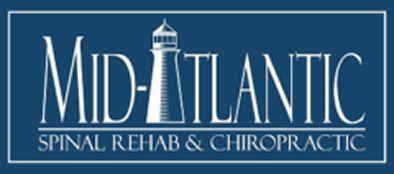Maximum Medical Improvement Following Baltimore Car Accidents
As a Chiropractor that has been treating injured patients for nearly 7 years, one of the most common questions I get asked by new patients is “how long do I need to come in for treatment?” I suspect that this stems from the misconception that Chiropractic care is ongoing and that “once you go to a chiropractor you have to keep going for the rest of your life.” While I would argue that there are health benefits to getting routine “maintenance” spinal manipulation/adjustments, generally speaking insurance companies do not want to pay for this care stating that there are no clearly defined health benefits to long term manipulation in asymptomatic patients. Nonetheless, since the question of duration of treatment comes up quite often I figured I would address it in this article.
When it comes to treatment length, I never discuss it in terms of time (i.e. 2 weeks, 4 weeks, etc). Rather, I tell patients that I will recommend treatment until a patient reaches MMI, or maximum medical improvement. This is a med-legal expression stating that a patient is not expected to improve or worsen with the addition of any additional therapy or time.
Keep in mind, this does not mean that all patients that treat in my office for Baltimore car accidents and that have suffered Baltimore auto accident injuries are pain-free at the time of their final evaluation. Rather, it just means that additional therapy will not improve their condition. That is, there condition is stable. Ideally, this will occur once a patient has reached pre-injury status, but that is not always the case.
Here are two examples to demonstrate maximum medical improvement following a Baltimore auto accident:
1). Jane Doe gets rear-ended and presents for care. She declares no prior symptoms before the auto accident, but on day 1 mentions that she is experiencing headaches, neck pain, mid back pain, and lower back pain as a result of the crash. We treat her for six weeks and at the end of the six weeks she is completely pain free and feels “back to where she was before the crash.” In this instance Jane will be released at MMI since she is back to pre-injury status and since she does not stand to benefit from any additional treatment in my office or with any other specialists.
2). John Doe (No relation to Jane) gets rear-ended and presents for care. He declares that prior to this Baltimore auto accident he had chronic lower back pain stemming from a separate crash six years ago. He reports to be seeing a pain specialist once a month and has been since his previous crash where he undergoes lower back cortisone injections as needed. He reported his pre-crash lower back pain levels as being present approximately 3-4 days per week, intermittent (25-50% of awake time), and a pain scale of 4/10. Now, as a result of the new crash, he is reporting headaches, neck pain, mid back pain (all new complaints) and worsened lower back pain (that is now daily, constant (75-100% of awake time) and a 9/10. The key thing to note with Mr. Doe’s treatment is that as much as he would like me to completely eliminate his lower back pain, it is not something that I can actually do, since he reports a pre-accident level of pain. That is, I can only treat him until he reaches pre-injury status. So let’s say he treats for 8 weeks and that his headaches, neck pain, and mid back pain have resolved. And let’s also assume that his lower back pain levels are now back at pre-injury levels of 3-4x/week, intermittent, and 4/10. At this point Mr. Doe is exactly where he was prior to the new crash. Provided that an addition or absence of treatment both in my office or with other specialists is not expected to improve or worsen his condition, I would also be releasing Mr. Doe from treatment at MMI at that time.
The point of the above example illustrates that MMI is not the same as being released pain free. MMI just means that more care (whether by me, by a physical therapist, pain management doctor, orthopedic specialist, etc) will not benefit the patient’s condition.
The reason that determining MMI is important is because (and this is more so true in worker’s compensation claims) patients can have permanency ratings based on their residual injuries. These permanency ratings can be equated to a financial payout for the injured claimant (or worker). While it is true that auto accident patients/claimants can also be given permanency ratings, it does not occur that often. When permanency ratings are indicated, I typically refer my patients to noted orthopedists in the area who are more familiar with the AMA guidelines for permanent impairment and who can properly evaluate and assign a rating.
So to reiterate – Following a Baltimore auto accident, if you ask me how long you need to treat, the answer will be the same. I will treat you until you reach maximum medical improvement, nothing more and nothing less.
If you, or someone you know, has been injured in a Baltimore auto accident, and you wonder whether or not you have reached maximum medical improvement, please contact Mid-Atlantic Spinal Rehab & Chiropractic at (443) 842-5500. We would be happy to help!
Dr. Gulitz
